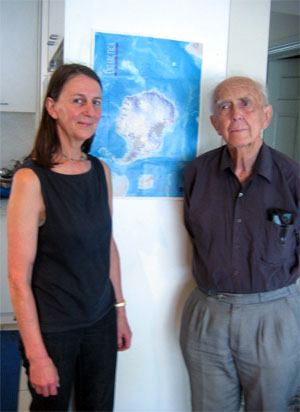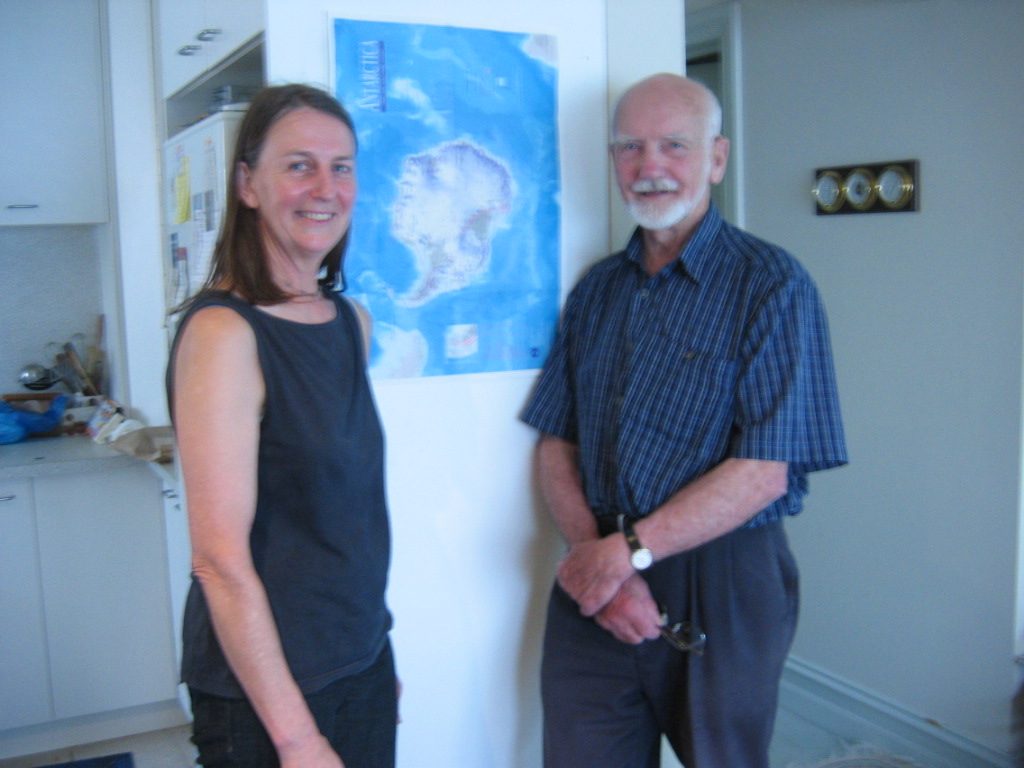
Melbourne, March 2007.

Melbourne, March 2007.
I went to the show of Antarctic art by Sydney Nolan at the Mornington Art Gallery. I watched a man looking deeply into one of the paintings.
Something about the way he stooped so closely into the picture made me think he had been there, in Antarctica.
And so I met Jack Ward who had worked at Mawson station as a radio operator with the Australian National Antarctic Expeditions (ANARE) in 1955. I introduced myself and found that he was eager to talk.
My father had worked with radio communications between Antarctica and the ‘outside world’ when I was a child, and so we had things in common that we could talk about. And we talked about Antarctica, and Nolan’s paintings, agreeing that he had captured, in an abstract way, something of the forces at work in its landscape.
Later, Jack introduced me to his friend and fellow expeditioner, Fred Elliot.
Fred worked as a weather observer, and official party photographer. He was also an artist, later producing a large series of photlothographs from drawings he made from his photographs: Antarctica in Black and White. (1997)
Fred and Jack had spent over a year together, between 1954 ans 1956, as members of the Heard Island – Mawson expedition, led by John Bechervaise. Each had responded very powerfully to the landscape, Fred through drawing and Jack through writing.
Through them I begin to get a sense of the physical changes that happen in the landscape over a year, and of changes a man can experience within themselves, enduring that icy place.
Here is an outline of the research I aimed to do:
Working title: The Landsman’s View
This research aims to reveal how a wintering Antarctic base community perceive Antarctica. What lenses do they look through? How can animation be used to reveal what they see?
The hypothesis is that a multiplicity of views will be revealed, with layers of meaning that reflect scientific knowledge, physical experience, and aesthetic and psychological responses.
The methodology to be used will be interviewing expeditioners, and analysing data they are willing to share. This data can consist of journals, creative writing, arts, artifacts, social rituals, scientific data sets and research papers. Drawings and animations will be made from this analysis to reflect a range of perceptions of Antarctica. As the animations are being composed, comments and corrections will be invited from contributing expeditioners.
An on-line interactive interface will be designed to integrate animations with The Antarctic Dictionary. (Hince, 2000) This work will build on a previous experiment in which the interactive artwork, Roget’s Circular, (Roberts, Lisa \& Smith, 2001)was integrated on CD-ROM with the Macquarie Thesaurus. (Library, 2001)
Research into visual perceptions of Antarctica has mainly focused on the two dimensional artworks of those professional artists and photographers who have accompanied scientific expeditions since the time of Captain James Cook (Andrews, L., 2005). This research aims to explore, discover and reveal something of an Antarctic culture that can develop within an Antarctic community. This work will compliment research into Antarctic literary culture (Leane, 2002), and to an understanding of ‘The Landsman’s View’. This is the view of people who have spent a substantial duration of time working on the Antarctic Continent. (Simpson-Housley, 1992). (Roberts, 2007)
Composed 5 January 2007. Edited, 9 July 2009
